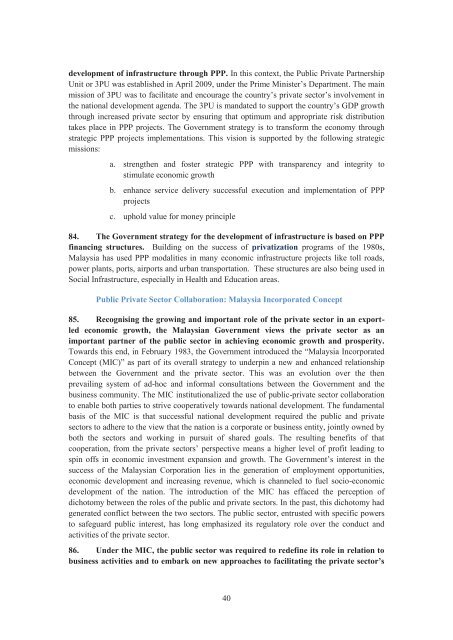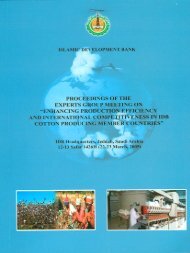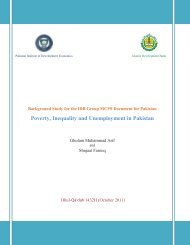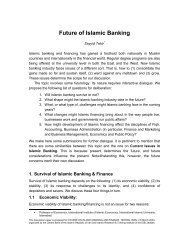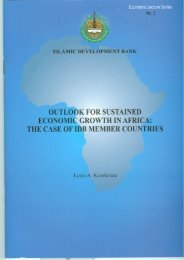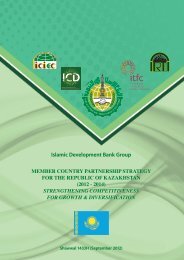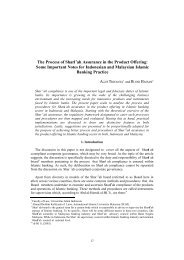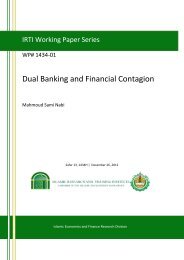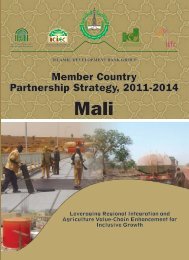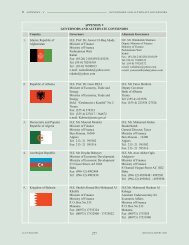Country Economic Work for Malaysia - Islamic Development Bank
Country Economic Work for Malaysia - Islamic Development Bank
Country Economic Work for Malaysia - Islamic Development Bank
Create successful ePaper yourself
Turn your PDF publications into a flip-book with our unique Google optimized e-Paper software.
development of infrastructure through PPP. In this context, the Public Private Partnership<br />
Unit or 3PU was established in April 2009, under the Prime Minister’s Department. The main<br />
mission of 3PU was to facilitate and encourage the country’s private sector’s involvement in<br />
the national development agenda. The 3PU is mandated to support the country’s GDP growth<br />
through increased private sector by ensuring that optimum and appropriate risk distribution<br />
takes place in PPP projects. The Government strategy is to trans<strong>for</strong>m the economy through<br />
strategic PPP projects implementations. This vision is supported by the following strategic<br />
missions:<br />
a. strengthen and foster strategic PPP with transparency and integrity to<br />
stimulate economic growth<br />
b. enhance service delivery successful execution and implementation of PPP<br />
projects<br />
c. uphold value <strong>for</strong> money principle<br />
84. The Government strategy <strong>for</strong> the development of infrastructure is based on PPP<br />
financing structures. Building on the success of privatization programs of the 1980s,<br />
<strong>Malaysia</strong> has used PPP modalities in many economic infrastructure projects like toll roads,<br />
power plants, ports, airports and urban transportation. These structures are also being used in<br />
Social Infrastructure, especially in Health and Education areas.<br />
Public Private Sector Collaboration: <strong>Malaysia</strong> Incorporated Concept<br />
85. Recognising the growing and important role of the private sector in an exportled<br />
economic growth, the <strong>Malaysia</strong>n Government views the private sector as an<br />
important partner of the public sector in achieving economic growth and prosperity.<br />
Towards this end, in February 1983, the Government introduced the “<strong>Malaysia</strong> Incorporated<br />
Concept (MIC)” as part of its overall strategy to underpin a new and enhanced relationship<br />
between the Government and the private sector. This was an evolution over the then<br />
prevailing system of ad-hoc and in<strong>for</strong>mal consultations between the Government and the<br />
business community. The MIC institutionalized the use of public-private sector collaboration<br />
to enable both parties to strive cooperatively towards national development. The fundamental<br />
basis of the MIC is that successful national development required the public and private<br />
sectors to adhere to the view that the nation is a corporate or business entity, jointly owned by<br />
both the sectors and working in pursuit of shared goals. The resulting benefits of that<br />
cooperation, from the private sectors’ perspective means a higher level of profit leading to<br />
spin offs in economic investment expansion and growth. The Government’s interest in the<br />
success of the <strong>Malaysia</strong>n Corporation lies in the generation of employment opportunities,<br />
economic development and increasing revenue, which is channeled to fuel socio-economic<br />
development of the nation. The introduction of the MIC has effaced the perception of<br />
dichotomy between the roles of the public and private sectors. In the past, this dichotomy had<br />
generated conflict between the two sectors. The public sector, entrusted with specific powers<br />
to safeguard public interest, has long emphasized its regulatory role over the conduct and<br />
activities of the private sector.<br />
86. Under the MIC, the public sector was required to redefine its role in relation to<br />
business activities and to embark on new approaches to facilitating the private sector’s<br />
40


